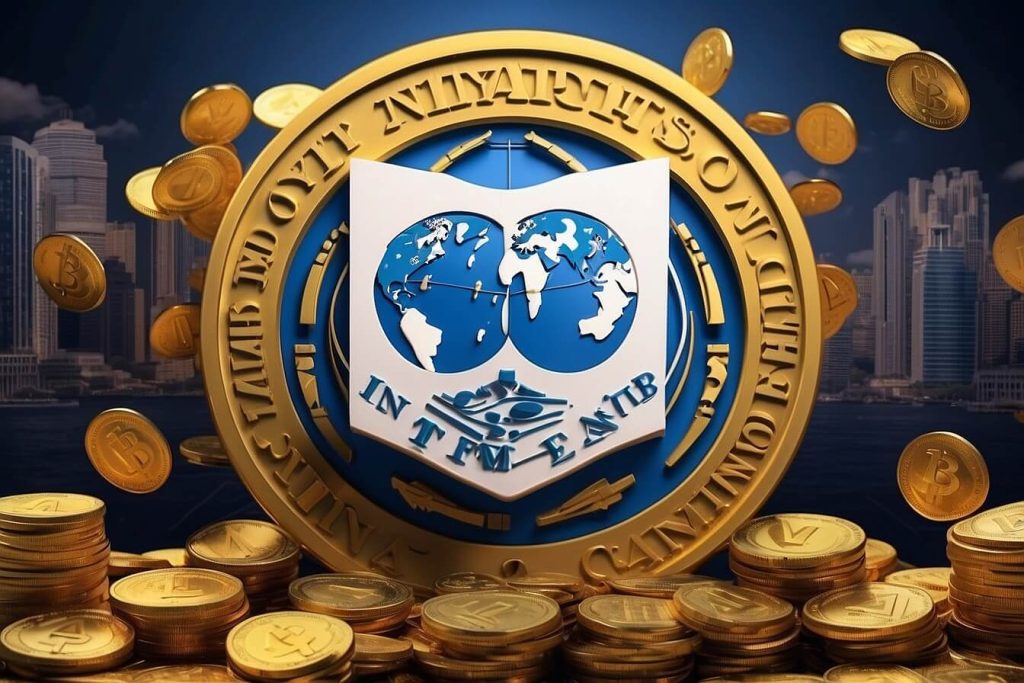In a surprising turn of events, the International Monetary Fund (IMF) has undergone a significant transformation in its approach to regulating cryptocurrency, while concurrently, the United States government has intensified its efforts to oversee the digital asset industry. This sudden shift has sent ripples across the global financial landscape, triggering discussions and deliberations on the future of cryptocurrencies.

The International Monetary Fund (IMF) has reevaluated its stance on banning cryptocurrencies due to evolving market dynamics and the recognition of cryptocurrencies like Bitcoin as legal tender in certain countries, most notably El Salvador. Initially, the IMF had expressed concerns about consumer protection and financial stability, which informed its earlier position. However, the organization now acknowledges that cryptocurrencies possess the potential to advance financial inclusion and stimulate economic growth.
Conversely, the U.S. government has adopted a more stringent approach towards cryptocurrencies, aiming to bolster regulatory control and combat illicit activities. This concerted effort is driven by apprehensions about potential risks to the financial system and the necessity of safeguarding investors. Consequently, the cryptocurrency market has become more volatile and uncertain.
The implications of these developments extend beyond the purview of the IMF and the United States. Numerous countries are closely monitoring the IMF’s revised stance on cryptocurrency bans and may adjust their regulatory approaches accordingly. In an ever-evolving global digital asset landscape, the ability to adapt and make well-informed decisions is paramount.

Background: IMF’s Previous Position on Cryptocurrency Prohibitions
The International Monetary Fund (IMF) has historically espoused a conservative stance towards cryptocurrencies, advocating for stringent regulatory measures and even proposing complete prohibitions in certain cases. The IMF has voiced concerns regarding potential risks to consumer safety, financial stability, and the overall economic well-being of nations. A notable example is when El Salvador became the first nation to formally embrace Bitcoin as a recognized form of payment, prompting the IMF to advise caution and a thorough assessment of risks and benefits.
The IMF once shared a similar perspective with other global central banks and financial institutions, emphasizing concerns about the potential threats that cryptocurrencies could pose to the overall financial system. However, recent developments have compelled the IMF to reevaluate its position and embrace a more nuanced outlook on cryptocurrency bans. With the cryptocurrency market consistently displaying volatility and an increasing number of nations adopting digital assets, the IMF acknowledges the importance of establishing a well-balanced and flexible regulatory framework that ensures both financial stability and nurtures innovation.
The IMF’s shift in perspective reflects a growing recognition of the potential advantages and challenges presented by digital assets. As a leading global organization responsible for managing assets, the IMF underscores the significance of finding an equilibrium that promotes financial inclusivity, fosters technological progress, and addresses potential risks to the global financial system.
The IMF’s Change of Stance Regarding Cryptocurrency Prohibitions: Reasons and Justification
The International Monetary Fund’s unexpected change in position concerning cryptocurrency bans has captured attention, signifying a notable departure from its formerly cautious stance. Several influential factors have contributed to shaping the IMF’s revised perspective on cryptocurrency bans, underscoring the necessity of adopting a more comprehensive and equitable regulatory strategy.

Dynamic Market Shifts
The IMF’s shift in stance is primarily driven by its recognition of the rapidly changing dynamics within the cryptocurrency industry. The remarkable expansion of cryptocurrencies, such as Bitcoin (BTC), has garnered global attention from governments and financial institutions. With the increasing acceptance of these digital assets, the feasibility of imposing outright bans to regulate them becomes less tenable. The IMF acknowledges the need to adapt to emerging market trends and implement strategies that promote financial innovation while safeguarding consumer interests.
Global Economic Considerations
Another influential factor contributing to the IMF’s altered perspective is the potential impact of cryptocurrency bans on national economies. El Salvador’s decision to embrace Bitcoin as legal tender has propelled cryptocurrencies into the mainstream, triggering discussions among governments and central banks about the future of digital assets. The IMF recognizes the paramount importance of preserving financial integrity and stability while carefully assessing the benefits and risks associated with cryptocurrencies. By revising its stance on cryptocurrency bans, the IMF aims to foster dialogue among nations to formulate well-considered regulations that encourage innovation and financial inclusion.
In conclusion, the IMF’s decision to revise its position on banning cryptocurrencies is rooted in a deeper understanding of the changing dynamics of the market and global economic conditions. By adopting a more equitable and forward-looking strategy, the IMF seeks to stimulate informed discussions regarding cryptocurrency regulation. It acknowledges the potential benefits of digital assets but also underscores the significance of implementing robust safeguards to protect consumers. As the world grapples with the ever-shifting landscape of cryptocurrency regulations, it is imperative for policymakers and stakeholders to collaborate and strike a balance between nurturing innovation and ensuring stability.

[…] Read more: The Evolution of IMF’s Cryptocurrency Regulation Strategy and Heightened U.S. Vigilance […]